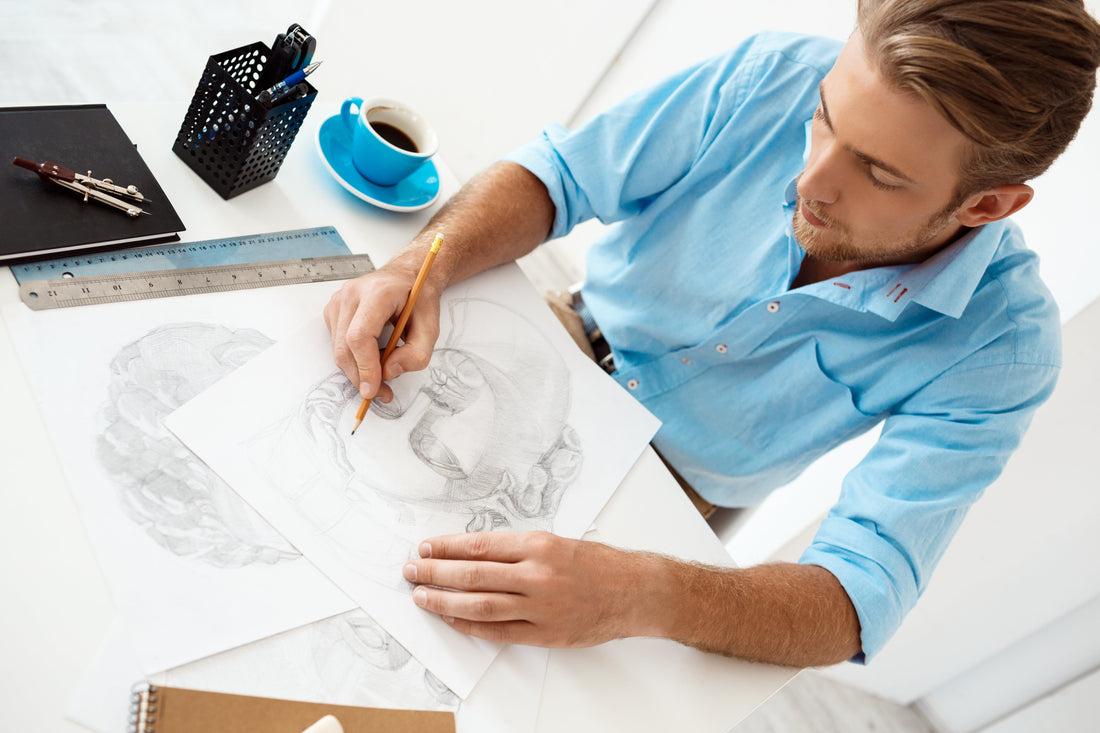
Choosing your drawing materials methodically: budget, level and style
Drawing, much more than a simple hobby, is a universal language. It allows you to express an idea, an emotion, or a view of the world with a unique freedom. But for this expression to take full form, you still need to be well-equipped. At a time when the selection is vast and sometimes confusing, we offer you a clear and simple guide to making the right choices. At Horizon World Art, we believe that every artist deserves tools that match their sensitivity. Discover here our advice for selecting the equipment best suited to your practice, your level, and your artistic ambitions.
The essential criteria for choosing your drawing equipment
There are several factors to consider when selecting your supplies. It's not just about buying the most expensive equipment, but also about finding the right balance between performance, durability, ergonomics, and price. Each choice directly influences the final result and the pleasure you'll have creating.
1. Your budget and your needs
Before filling your basket, take the time to evaluate two essential things: what you want to do and how much you are willing to invest .
If you're just starting out, there's no need to aim for high-end equipment right away. The important thing is to start with a reliable, value-for-money basic kit. This will allow you to explore several techniques (graphite pencils, charcoal, felt-tip pens, ink, etc.) without pressure or fear of wearing out expensive equipment too quickly. The goal is to learn, experiment, make mistakes—in short, to practice freely.
Simple but good quality equipment will also save you the frustration that sometimes comes with using low-end tools: lead that is too hard, paper that is too smooth or fluffs, dull colors, etc. These small details can slow down progress and even discourage you.
Over time, as your style becomes more defined and your technical preferences become more established, you can invest in more targeted supplies : specialty papers, high-end pencils, professional markers, pigment inks, etc. At this point, purchasing becomes more strategic: you will know why you are choosing one tool over another, and how it will serve your artistic expression .
In short, adapt your equipment to your current level, while keeping the door open to evolution. Because in art, as in any discipline, progressing also means learning to choose your tools better.
2. The type of drawing you practice
The ideal equipment will depend intrinsically on the technique you wish to use and explore. Each technique has its own specificities and requires appropriate tools to get the most out of it.
- Charcoal drawing: This technique requires paper with a slightly rough (textured) surface that will allow the charcoal to grip without crumbling. Charcoals of varying hardness (soft for deep blacks, medium for details) are essential. Blending stumps, made from rolled paper or felt, are perfect for softening transitions and creating subtle gradations. A kneaded eraser is essential for lightening areas without damaging the paper.
- Ink drawing: For ink drawing, choose nibs with different tips (fine for details, broad for solid areas), nib holders, and good Indian ink, known for its depth and water resistance once dry. The paper must be thick and of sufficient quality so that it does not curl or absorb the ink excessively, thus ensuring clean and precise lines.
- Graphite pencil drawing: This is the most accessible and versatile technique. A varied range of graphite pencils (ranging from 9H for very light sketches to 9B for intense shading) is recommended. A good precision sharpener and a selection of erasers (a white eraser for clean erasing, a kneaded eraser for subtle corrections) are also necessary.
- Pastel drawing: Whether using dry or oil pastels, the paper plays a crucial role. Velvet, canvas, or grainy paper is ideal for holding pastel powder and allowing for layering. Pastels offer exceptional color richness and luminosity, but require a fixative to preserve the work over time.
3. The quality of the tools
Investing in high-quality artist supplies can make a significant difference in the outcome of your artwork and your creative experience . Well-made pencils with consistent, break-resistant leads, papers that hold up well to washes without curling, and tools that retain their shape and effectiveness over time are all major assets for your artistic practice. The quality of the tools is reflected in the fine details, the richness of the colors, and the ease of execution of the gestures.
The key components of a complete drawing box
Paper: the foundation of your artwork
Choosing the right paper for artistic drawing is essential. It's the blank canvas on which your imagination will take shape. There are a multitude of paper weights, textures (smooth, fine grain, coarse grain), and compositions (cotton, wood, synthetic). For graphite or charcoal drawing, a paper with a slight texture (fine or medium grain) is often preferred because it grips the medium better, allowing for more pronounced lines and richer gradations. For wet techniques like watercolor or ink, a thicker (at least 200g/m²) and water-resistant paper is essential to prevent it from warping.
For example, artworks featured on platforms like Horizon World Art often demonstrate the importance of the right medium. Read the detailed descriptions for each piece. The painting Stars of Love , for example, is made on Canson Deluxe 224mg paper, ideal for acrylics, charcoal, and even coffee, demonstrating the versatility and robustness of certain artist papers, allowing for great creative freedom.

Drawing Instruments: Pencil, Charcoal, Ink, and More
The diversity of drawing tools is immense, and each medium offers a unique experience. Graphite pencils vary in hardness (from H for fine, precise lines and light sketches, to B for soft shadows, dark and expressive renderings). Charcoal pencils offer an incomparable depth of black and great ease of gradation, perfect for portraiture and light studies. Ink-based pens and markers allow for clean, dynamic lines and uniform areas of color, ideal for illustration and comics. It's essential to experiment with different tools to discover which ones resonate most with your artistic sensibility and goals.
When exploring an online art gallery , observe the richness of textures, the precision of lines, and the depth of colors. Works like The Poet's Tree , with its generous dimensions of 110 cm x 75 cm, suggest the use of tools capable of covering large areas with great skill, while allowing for remarkable finesse of detail. The quality of the medium used on an appropriate support is decisive for the visual richness and longevity of the work.

Essential accessories: good companions for the artist
Don't forget the accessories which, although secondary, greatly facilitate the work and improve the final rendering of your drawings:
- Pencil sharpeners: A good pencil sharpener, whether manual or electric, ensures that the lead is always ready to use, whether for fine lines or quick sketches. Choose one that offers a clean sharpening without breaking the lead.
- Erasers: different types exist for various uses: the traditional white eraser for erasing without damaging the paper, the kneaded eraser, malleable, ideal for lightening areas of graphite or charcoal by dabbing, and precision erasers, often in the form of a pen, for meticulous corrections.
- Blending stumps and brushes: These tools are perfect for blending colors, softening lines, creating subtle gradients, or cleaning up charcoal or pastel powder. They help achieve soft, professional finishes.
- Fixatives: Essential for charcoal, pastel, or pencil drawings, fixatives are sprays that protect the work by fixing it to the surface, preventing it from smudging or fading over time. They come in matte or glossy finishes, and some are designed not to alter the colors.
- Storage Bag: An organized bag protects your equipment and allows you to take it anywhere with you, making it easier to draw outdoors or travel.
A close link between works and tools
Sometimes, it's the artworks themselves that inspire us to choose certain materials or explore new techniques. The beauty of a painting like The Louvre from the Tuileries can inspire us to recreate specific lighting effects, architectural details, or moods. The choice of paper, the fineness of the pencil strokes, or the subtlety of the color gradients used by the original artist are often an interesting starting point for understanding how to achieve such a result. Observing and analyzing artworks , whether in a physical gallery or an online art gallery , is an invaluable source of learning about the choice and use of one's materials.

Choosing your art supplies is a personal and evolving journey. The key is not to be afraid to try new products, to experiment with different artistic techniques , and above all, to trust yourself. Each artist develops their own sensibilities and preferences.
Let your creativity flow with the drawing materials that best suit and inspire you! Art is a journey, and the right materials are a valuable companion on this journey.
